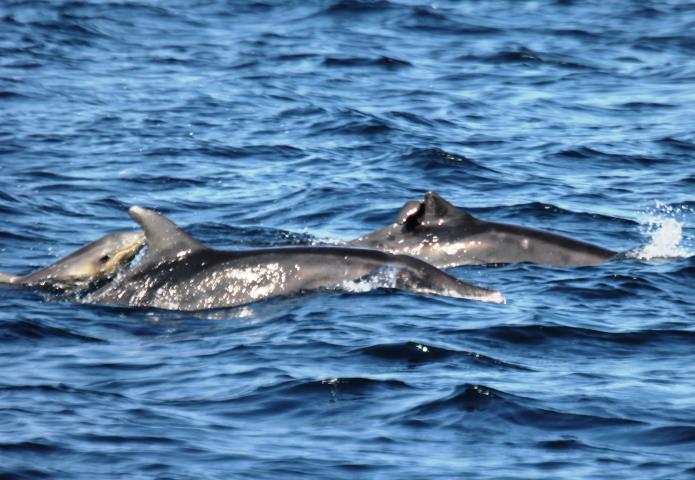Jo Marie Acebes
Other projects
17 Jan 2013
Research and Conservation of a Humpback Whale Winter Breeding Ground in Northern Luzon, Philippines
9 May 2014
Conservation of a Humpback Whale Winter Breeding Ground in Northern Luzon, Philippines
29 Mar 2016
Ecosystem-Based Management of a Humpback Whale Winter Breeding Ground in the Philippines
7 Dec 2018
Conservation of the Babuyan Marine Corridor: The Only Breeding Ground of Humpback Whales in the Philippines
The Project aims to understand and monitor the humpback population in the region and increase peoples’ awareness of the species’ and its habitat. The Project also aims to help establish proper guidelines on whale watching and develop a sustainable marine ecotourism plan for the Islands.

The Babuyan Islands is the only known breeding ground for humpback whales in the Philippines. There is a considerable number of whales migrating here every year. Recently recognized as part of the Asian stock of humpback whales in the western North Pacific, very little is still known about the extent of their distribution, abundance and migratory patterns. The Islands exhibit a high marine biodiversity with 12 other cetacean species, sea turtles and whale sharks. Local communities depend mainly on small-scale fisheries and backyard farming for their livelihood. In the past four years unsustainable and destructive extraction of these resources has escalated. Yet, the islands, owing to its reputed beautiful environment are being promoted as a tourist destination, highlighting whale-watching as a source of huge revenues. Despite the vast occurrence and diversity of cetaceans around the country, only a fraction of the Filipinos is aware of this. Very little government and public support is directed towards promoting cetacean research and conservation in the Philippines while threats to species populations and habitats are increasing.
We will describe the current status of humpback whales in the Philippines with an estimate of animals migrating to the Babuyan Islands. Through comparisons of fluke photos and song recordings with groups from Russia, Japan and Hawaii we will further substantiate links with other populations in the western north Pacific, particularly in feeding grounds. The results of the photoID study will determine the significance of this breeding ground in the Philippines to the western north Pacific humpback population. Observations made through boat-based surveys will allow us to assess current threats to cetaceans in this area (i.e. fishing practices with potential by-catch; dynamite fishing). Locally, our work will contribute important but currently lacking cetacean data to the municipality’s integrated coastal resources management plan. We will also give recommendations for their marine ecotourism plan. Local entrepreneurs will be trained in the proper conduct of whale watching and will help ensure that future whale watching tour enterprise will be conducted in accordance to the national guidelines. Our work will disseminate the cetacean-human interaction guidelines to other local stakeholders and the public through a workshop and brochures. The awareness and knowledge of island locals and the general Filipino public on cetacean research and conservation will be increased through an educational outreach program and a regularly updated website.